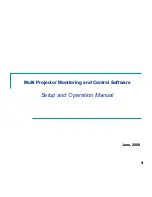
Configuring and Managing Interactive Devices 11-35
Managing Users
Specifying Keys to Switch Between Sessions
Access server users can define keys as switches. These keys can switch from one
session to another without having to return to local mode. When the user presses the
key, the access server interprets the character and does not pass it to the service node.
Pressing the BACKWARD SWITCH character activates the user’s previous session.
The FORWARD SWITCH character activates the next session. These switches can be
pressed either at the local prompt or in a session.
If the user has only two sessions, both of these switch characters restart the inactive
session. You can configure any keyboard character as the FORWARD or
BACKWARD SWITCH. Previously undefined control characters are recommended.
Do not select characters that the port user is likely to enter routinely while using a
service; otherwise, the current session is interrupted when that switch is pressed. Avoid
the tilde (~) character if you use function keys on the VT-series terminals or PCs.
Switch characters can be temporarily disabled for a particular session by using the SET
SESSION command for a LAT session or the Telnet client profile for a Telnet session.
(Refer to Specifying the Telnet Client Session Profile in this chapter.) However, they
remain in effect outside such a session.
To define these keys as switches, select a different character for each switch.
Example: Defining Keys as Switches
The following example shows how to set Ctrl/F and Ctrl/B for the forward and
backward switches on port 5:
Local> CHANGE PORT 5 FORWARD SWITCH ^F BACKWARD SWITCH ^B
To delete a switch character, use the NONE keyword instead of a character.
Note
If you are using a session management terminal and your port has MULTISESSIONS
ENABLED, switch sessions by using a terminal command rather than access server
switch characters.
Summary of Contents for Digital NetRider
Page 26: ......
Page 32: ......
Page 52: ......
Page 78: ......
Page 90: ......
Page 142: ......
Page 158: ......
Page 196: ...11 2 Configuring and Managing Interactive Devices Managing Users Managing Sessions ...
Page 246: ......
Page 268: ......
Page 312: ......
Page 374: ......
Page 428: ......
Page 446: ......
Page 486: ......
















































